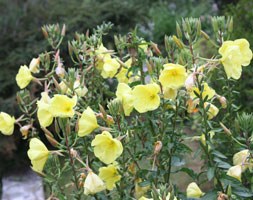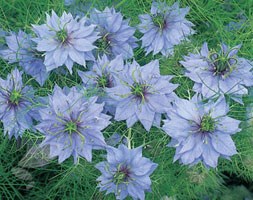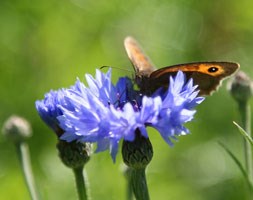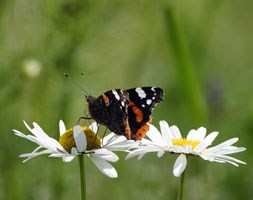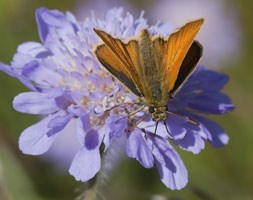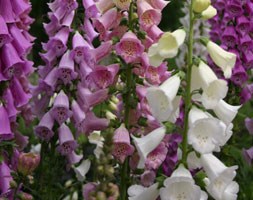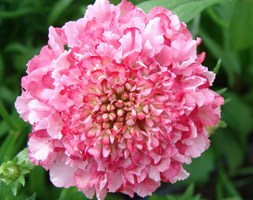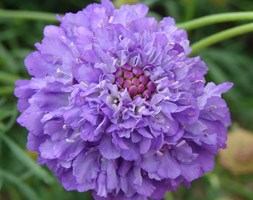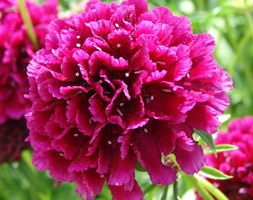Price reductions at Crocus
by Sarah - June 29th, 2014.Filed under: Crocus, Price Reductions.
Crocus reduced the price on these products today
Oenothera biennis (evening primrose) was £2.49 now £1.24
Position: full sun Soil: poor to moderately-fertile, well-drained soil Rate of growth: average Hardiness: fully hardy Evening primroses are prized for their ephemeral flowers that open at night and fade by dawn, and for their delicate fragrance that fills the air at dusk. The bowl-shaped, pale yellow flowers which appear on tall spikes from June to September seem to glow as the light fades and age to dark golden-yellow. They are happiest in a sunny, well-drained border or wildlife garden, and as the name suggests, are biennial. The flowers are an important source of nectar for bees and other insects and the seeds are used commerically for making evening primrose oil. Garden care: Protect the young foliage from slug damage using beer traps or environmentally-friendly slug pellets. Sow: March-October Flowering: July-August Approximate quantity: 500 seeds
Nigella damascena ‘Miss Jekyll’ (love-in-a-mist) was £1.99 now £1.29
Position: full sun Soil: any well-drained soil Rate of growth: fast growing Flowering period: July to September Flower colour: sky-blue Other features: excellent cut and dried flowers Hardiness: fully hardy annual Sky-blue, disc-like flowers appear on upright stems clothed in wispy-tipped foliage from midsummer. This easy to grow annual well-drained border. Ideal for the novice or young gardener, the blooms make excellent cut or dried flowers. Garden care: Best sown in situ, 5mm deep. Prepare the seedbed by incorporating some composted organic matter, remove any stones and rake to a fine tilth. Sow in autumn if you want early flowers the following summer, or in mid spring for a later crop. Thin them out when they are large enough to handle allowing 30cm between each. Deadheading regularly will help prolong the flowering period into autumn. Support the plants with twiggy branches in exposed gardens. Sow: September-October or March-May Flowering: June-September Approximate quantity: 500 seeds.
Centaurea cyanus (cornflower) was £2.49 now £1.49
Position: full sun Soil: well-drained soil Rate of growth: average Hardiness: hardy annual Piercing, bright blue flowers with ruffled petals and violet-blue centres appear from early to late summer among lance-shaped, mid-green leaves. Once a common sight in cornfields, this lovely annual is perfect for naturalising in a sunny wildflower meadow and is a magnet for butterflies and bees. The flower petals are edible and have a clove-like taste. Garden care: Wild flowers prefer poor soils, so do not apply fertiliser. Deadhead regularly to prolong flowering. In autumn, cut the faded flowerheads down to the ground and compost the dead stems. Sow: March-May or September – October Flowering: July – August-September or May -July Approximate quantity: 100 seeds.
Leucanthemum vulgare (ox-eye daisy) was £2.49 now £1.49
Position: full sun Soil: moist, well-drained soil Rate of growth: fast-growing Flower colour: white Other features: toothed, dark green leaves, excellent informal cut-flowers Hardiness: fully hardy Large, white, daisy-like flowers with yellow centres on long stalks. This native wildflower is commonly found growing in bold swathes on grassy banks and roadside verges from June to August. Perfect for naturalising in a sunny wildflower meadow, where it will create a carpet of flowers. This packet contains enough seeds for 1sq m of meadow – more if they are started off in a seed tray and grown on a little before planting out. Garden care: Divide over-congested clumps in autumn or spring. Sow: March – October Flowering: May – July Approximate quantity: 1350 seeds.
Knautia arvensis (field scabious) was £2.49 now £1.49
Position: full sun Soil: moderately fertile, well-drained, preferably alkaline soil Rate of growth: average Flower colour: bluish-lilac Other features: highly attractive to bees Hardiness: fully hardy Bluish-lilac, honeycomb-like flowerheads on slender stems from July to September and hairy, dull green leaves. This beautiful native field scabious was once used to treat scabies and other skin ailments – hence its common name. Highly attractive to butterflies and bees, it’s perfect for naturalising in a sunny wildflower garden, mixed or herbaceous border. Garden care: When sowing seeds do not use a fertiliser since wildflowers prefer poor soils. In autumn after flowering cut the faded flowerheads down to the ground and compost the dead stems. The photograph shows the small copper butterfly. Sow: March – October Flowering: July – September Approximate quantity: 40 seeds.
Digitalis purpurea Excelsior Group (foxglove Excelsior Group) was £2.49 now £1.49
Position:full sun to partial shade Soil: moist, humus-rich soil Rate of growth: average to fast-growing Flowering period: May to July Flower colour: purple, pink, creamy-yellow or white Hardiness: fully hardy Incredibly tall flower spikes appear throughout summer bearing large, tubular, purple, pink, creamy-yellow or white flowers, each with maroon or purple spotted throats. Try dotting these pastel-coloured foxgloves through the back of a large cottage-style border or leave them to self-seed and form clumps in a woodland setting. Garden care: Lightly press the seed onto the surface of a well-watered seed compost in mid to late spring and keep in a cold frame. When large enough to handle, pot on into individual cells and once they have developed a decent basal rosette of foliage they can be hardened off before planting out. They will usually start to flower in their second year. Sow: March-May Flowering: June-July Approximate quantity: 1000 seeds.
Scabiosa ‘Strawberry Parfait’ (Dessert Series) (pincushion flower) was £5.99 now £1.99
Position: full sun Soil:moderately fertile, well-drained, neutral to slightly alkaline soil Rate of growth: average Flowering period: July and August Hardiness: fully hardy Ideal for gravel gardens or patio pots, this pink-flowering perennial becomes tolerant of drought once established. Naturally prolific, prompt deadheading will encourage even more flowerheads to form, often prolonging the season into early autumn. Garden care: Protect young plants from slug damage using environmentally friendly slug pellets or beer traps. Deadhead regularly to prolong flowering and cut back the faded flower stems in autumn. Lift and divide large clumps every three years in spring.
Scabiosa ‘Blueberry Muffin’ (Dessert Series) (pincushion flower) was £5.99 now £1.99
Position: full sun Soil:moderately fertile, well-drained, neutral to slightly alkaline soil Rate of growth: average Flowering period: July and August Hardiness: fully hardy Domed lavender-blue flowerheads with larger florets towards the outer edges, are freely produced throughout summer. Their flowers are highly attractive to butterflies and bees, while their pretty colouring and wiry stems make them long-lasting and very attractive additions to cut flower arrangements. Garden care: Protect young plants from slug damage using environmentally friendly slug pellets or beer traps. Deadhead regularly to prolong flowering and cut back the faded flower stems in autumn. Lift and divide large clumps every three years in spring.
Scabiosa ‘Raspberry Sorbet’ (Dessert Series) (pincushion flower) was £5.99 now £1.99
Position: full sun Soil:moderately fertile, well-drained, neutral to slightly alkaline soil Rate of growth: average Flowering period: July and August Hardiness: fully hardy Somewhat ruffled raspberry coloured florets with prominent white stamens, look wonderful in a sunny border when intermingled with blue or purple flowering perennials. They also look very effective when highlighted by a screen of silver foliage. Garden care: Protect young plants from slug damage using environmentally friendly slug pellets or beer traps. Deadhead regularly to prolong flowering and cut back the faded flower stems in autumn. Lift and divide large clumps every three years in spring.







